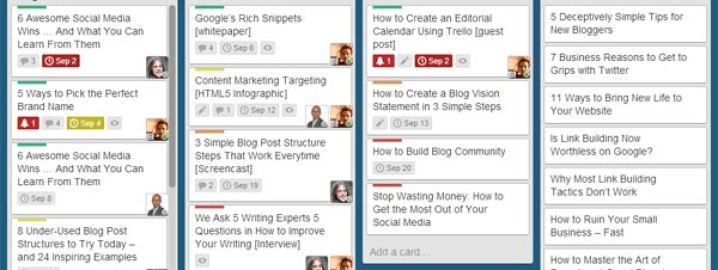In our last post, we explored all the ways you can gear up a solid content marketing strategy that your boss just can’t refuse. We all know the struggles of pitching new efforts you want to take on in your department, only to be shut down for lack of a strategy. So we’re eliminating that hurdle with our step-by-step guide on how to create a clear plan of attack that really packs a punch.
Initially, we looked at how to prepare for creating an outline that really narrows down on all the most important aspects. These will predominantly form your strategy – of which we will be going into detail within this post. If you haven’t read up on the first half of this, we highly recommend you grab a cappuccino, sit down and give it a read. It’s well worth the while and it will help you to really understand the points we are about to dive into.
Before we begin, we also highly encourage you to get in touch and let us know your thoughts about this post. Did it help you? Give us a holla!
But now, let’s get straight into it. We left off with a content audit and inventory – you know, a bit of a stocktake of what you’ve already got going on. Now, we’re going to get really stuck into how to turn that existing content into a powerhouse for your brand, combined with fresh, new content that creates engagement.
![How to create the ultimate content marketing strategy [part two] 1 contant audit](https://www.digitaleagles.com.au/wp-content/uploads/2020/03/contant-audit.png)
A nifty example of what your content audit could look like. Source: CMI
Step 9: List all the types of content you intend on working with
Gone are the days where the content funnel meant just smashing out a few blogs for your digital marketing. Now, you’re expected to create a full-blown campaign that’s filled with lead magnets, email marketing incentives, well-written articles, whitepapers and more. To do all this, you really need to understand your target audience.
If there’s one mistake we see time and time again it’s that brands are quick to jump into content marketing without even understand what kind of content their audience needs. There’s no point just churning out material just because you know you have to – it must have a purpose.
So, that being said, sit down and take a pen to paper to understand what kind of content you plan on dealing with. You’ve already gone through your channels and inventory to know what you’ve done to date, as well as what’s working and what’s not – use all this to your advantage.
To really leverage your success here, you’ll need to do two critical things:
- Identify all the content that requires fine-tuning and fixing from your inventory
- List all content that’s missing from your inventory (things you know you should be doing or topics you haven’t touched on enough. This might even be things that worked well but haven’t been done for a certain theme in your business.)
These will form the foundation of your strategy. You’ll need to update and refine all the content you know could perform better, and you’ll need to create whole new pieces to add to your mix. If you’re not sure what kind of formats you might need to do, consider the following:
- SEO-driven blogs that are long-form. These are usually known as pillar pieces.
- Cluster blog posts (formed around your pillar post and much shorter – around 500-600 words)
- Interviews
- eBooks and whitepapers (typically handy for lead magnets and lead gen)
- Email courses (this is a more challenging one)
- Email marketing
- Explainer videos
- Infographics
- Case studies.
Once you have a list like this in hand, you can start to give each a description of what that will look like for your business.
![How to create the ultimate content marketing strategy [part two] 2](https://www.digitaleagles.com.au/wp-content/uploads/2020/03/bx.png)
We’re big on using case studies as part of our content strategy. Why? Because they leverage and inspire trust in our brand. They prove our success stories.
Step 10: Understand the role of your team and workflow
All too common, we fall into the trap of underestimating just how much time it takes to create a single piece of content. Actually, it takes a lot more time, especially if it’s not your forte. So when you’re mapping out your strategy, make sure you incorporate who is in your team and who will be responsible for creating various formats. The overall goal should be to get an idea of how much you can actually create; what’s your team’s capacity?
Start by listing all of those within your team and potentially any contractors you have on hand as well. In terms of your workflow, create a process you are happy to stick with. This might look something like:
- Ideation
- Write
- Design
- Edit
- Schedule
- Publish
- Promote.
It could even be far more advanced than this, but no matter how it ends up looking, you must have one before you do anything at all. When it comes to capacity, think about how much you think you’ll be able to handle within your team.
Pro tip: A handy way to calculate this is by creating a spreadsheet, listing all of the types of content you’re thinking of creating, and how many hours you’d allocate for each. This will give you a total number of hours you’ll need to set aside or your team, and an indication as to whether you even have this many hours in the month.
![How to create the ultimate content marketing strategy [part two] 3 content flow](https://www.digitaleagles.com.au/wp-content/uploads/2020/03/content-flow.png)
An example of how to estimate how much attention your team will need to allocate to your monthly content calendar. This one is from 2017, but it’s a great example of how to map our your spreadsheet.
Step 11: Flesh out your content calendar
This is the step that brands across the world are too quick to jump into. You’ll find them doing it from the start when in reality, it should be one of your last steps.
Now that you know what kind of content you’re going to create and how much time you have to do it, you can put it all in a calendar. Some will call this an editorial calendar while others will have a different name – no matter what it’s labelled, this should be a schedule of where all your emails, ebooks, blog posts, podcasts, video, lead magnets etc. are all going to go.
Pro tip: DO NOT forget your social media channels here. If you have someone doing this already, make sure you incorporate their current efforts and schedules as well. Your content campaign should always reflect or tie into what you’re doing on social media channels. Also, include any guest blogging or syndication tactics as well.
How do you create a content calendar?
Everyone has different ways of doing this, but a great way to get started is by making a Google Calendar especially for your content team. Or you could use a tool like Trello or Asana’s calendar views to flesh out your schedule.
Map out each day of what will be published and what kind of category it falls into – e.g. brand awareness, guest blogging, lead generation etc. There’s no right or wrong way for a content calendar, so long as you have a clear plan in place and it reflects all the content you planned to make or refine in the previous steps.
![How to create the ultimate content marketing strategy [part two] 4 trello](https://www.digitaleagles.com.au/wp-content/uploads/2019/05/trello.png)
Trello is a handy way to map out your content calendar.
Step 11: Consider how you will amplify your material
Once you’ve tackled all the hurdles of publishing content, we highly recommend you to sit down and consider all the ways you intend to promote it. Don’t expect readers and eyes to just land on your nifty blog post – you’ll need to put in the hard yards to get it seen, to really get maximum returns.
A few simple steps that are often overlooked include:
- Let those around your office know about the post and ask them to share it around
- Share it through your social channels
- Send a message to email subscribers to let them know it is up
- Email potential influencers and let them know about it (think backlinks)
- Write up guest posts that link to a piece of content you’ve done.
There’s far more you can do than just these steps, but they’ll at least get you started. If you don’t do any, we recommend at least doing the last – the more you promote your content to the ‘heroes’ of your space, the more you’ll amplify your presence.
![How to create the ultimate content marketing strategy [part two] 5 email content](https://www.digitaleagles.com.au/wp-content/uploads/2020/03/email-content.png)
Here’s an outside-the-box approach to how you can amplify your blog post. Come to think of it, we’ll be doing just that for this one.
In essence, these are the most critical steps in creating a content strategy. But like we said at the beginning of part one, there is no absolute Bible to doing so. You’ll need to assess what works for your own brand and what really makes your audience tick.
Remember there’s no cookie-cutter approach – what worked for your neighbouring cafe business may not work for yours. Above all, remember to stay unique and think as your own brand – the more you can create a distinct mindset, the more you’ll reap the benefits of content marketing.
Not sure how to put all of this into action? Get in touch with the Digital Eagles team to get started with a content strategy for your brand.



















